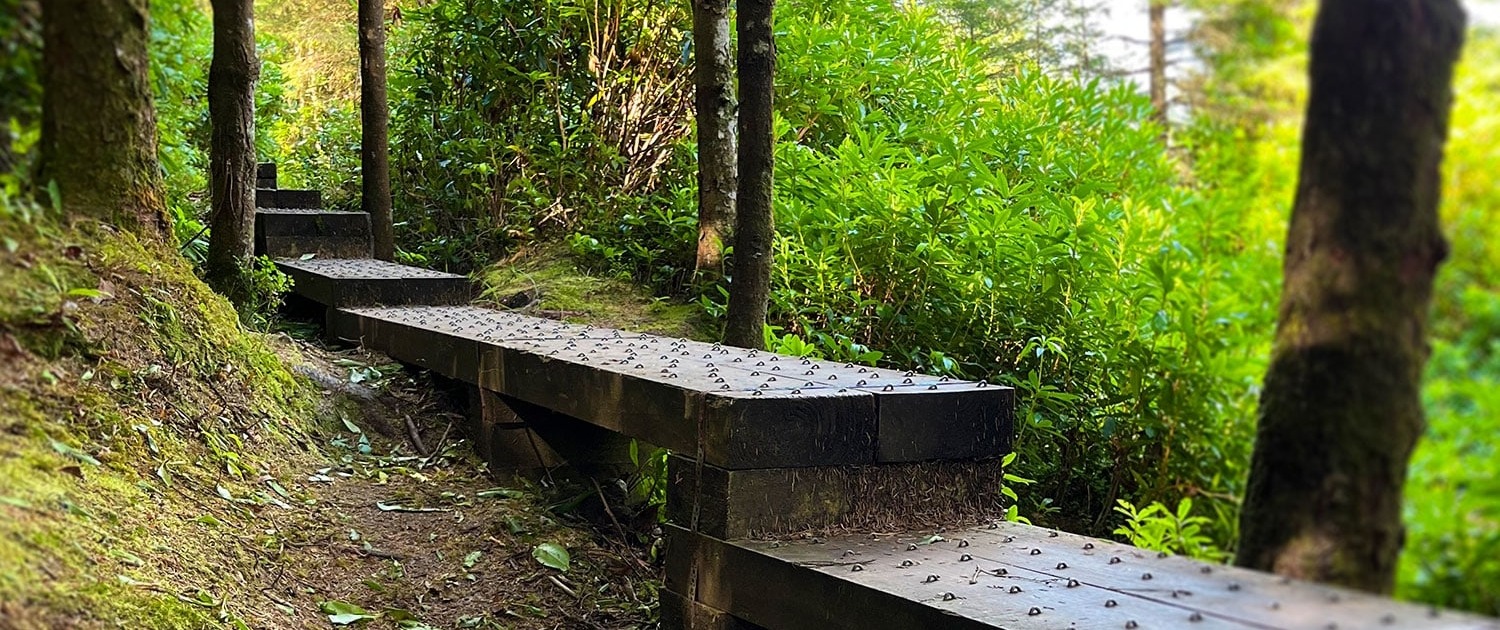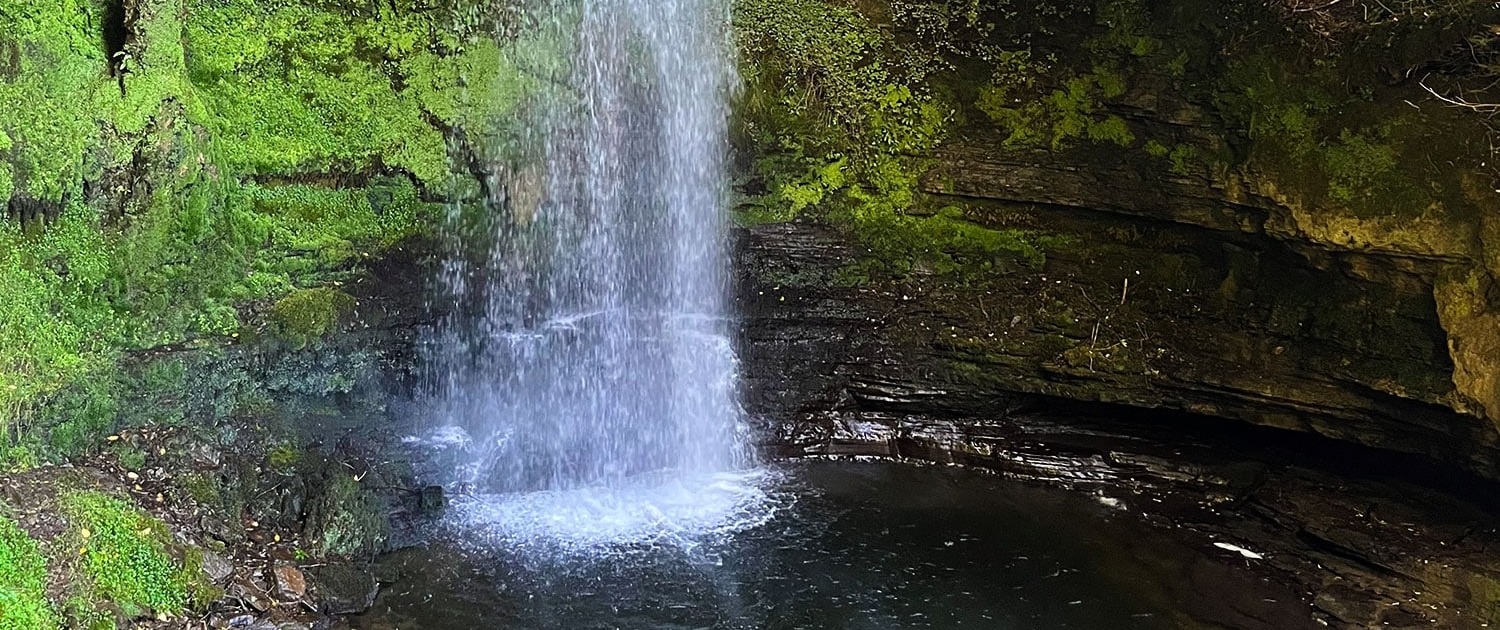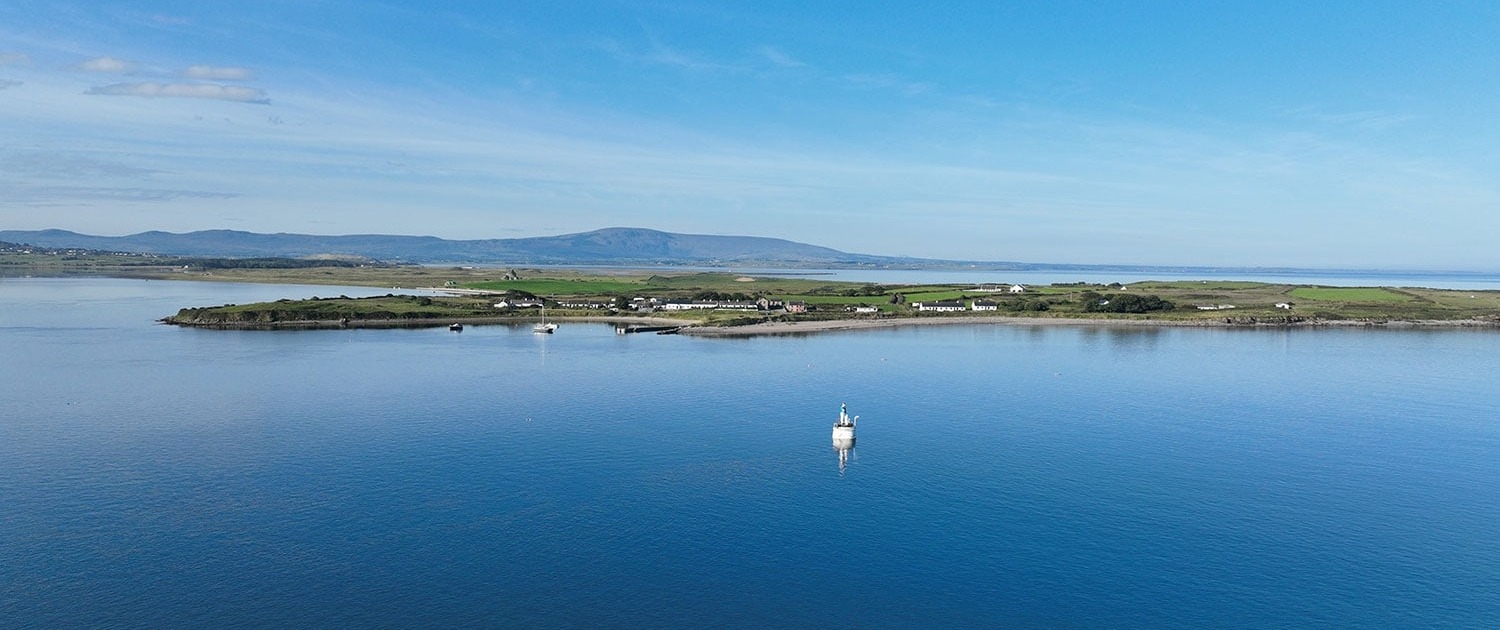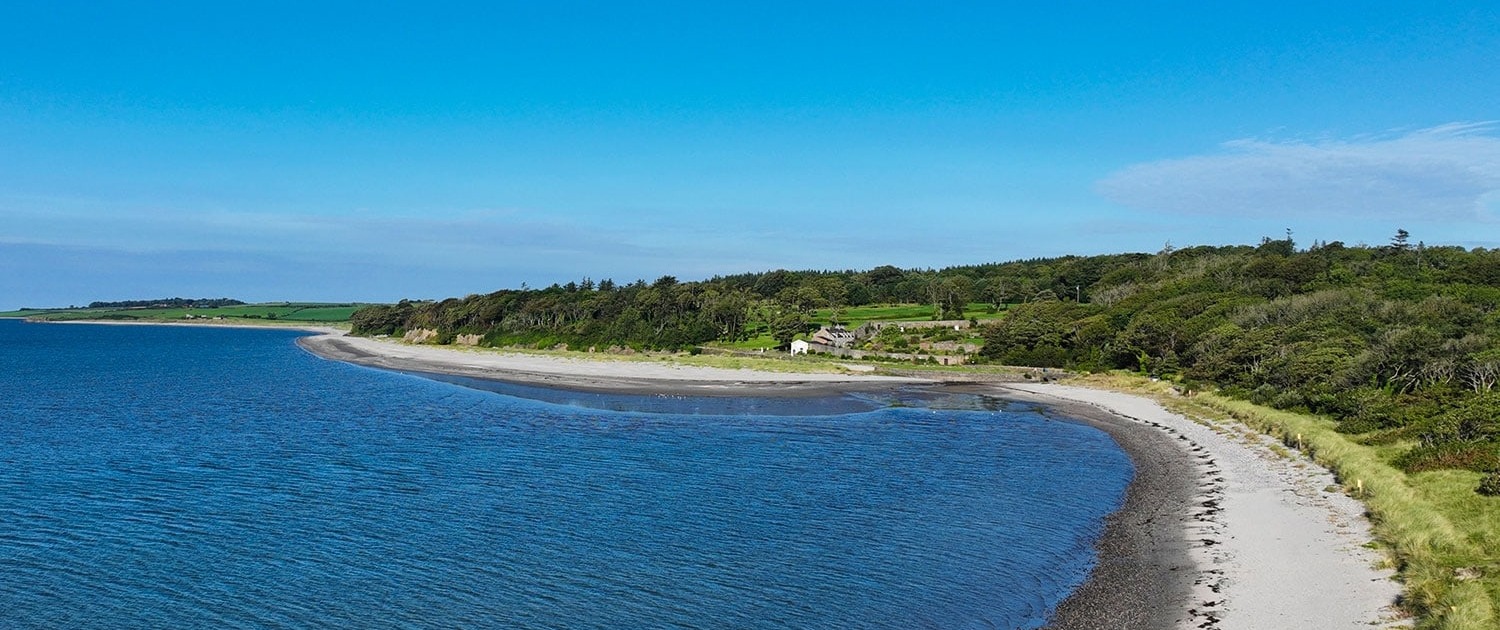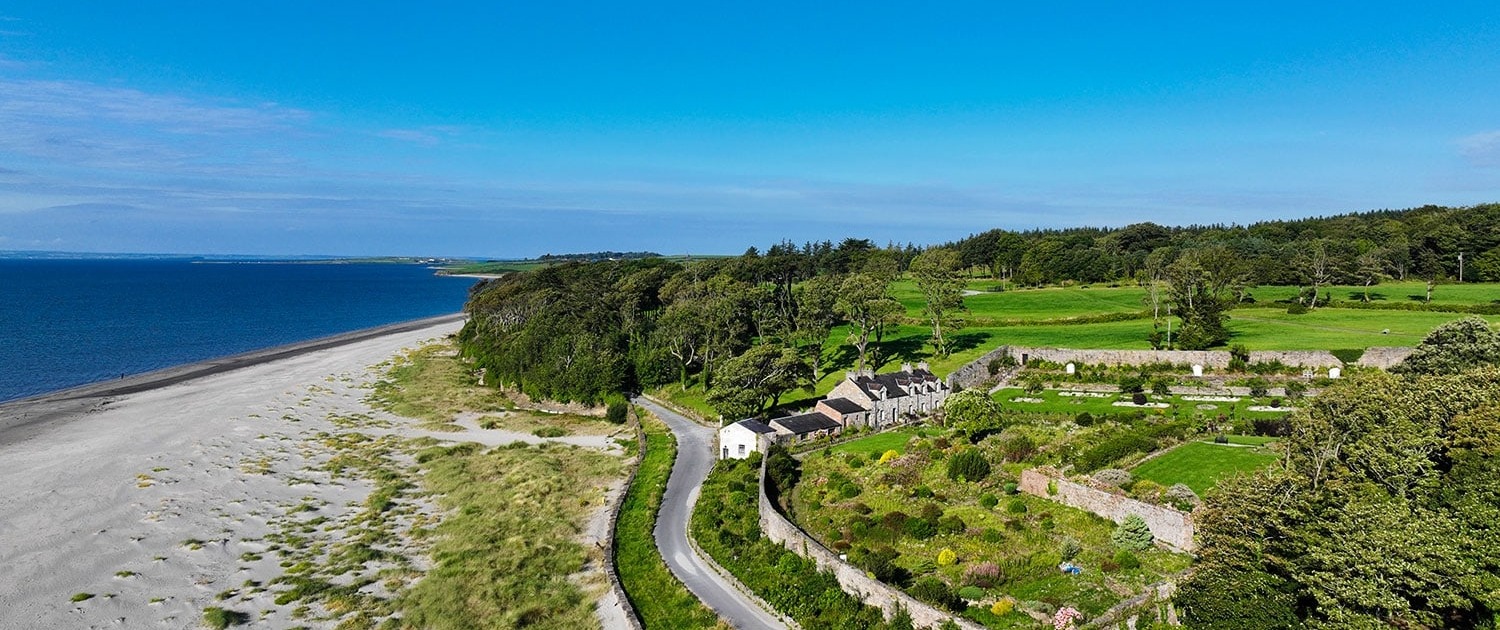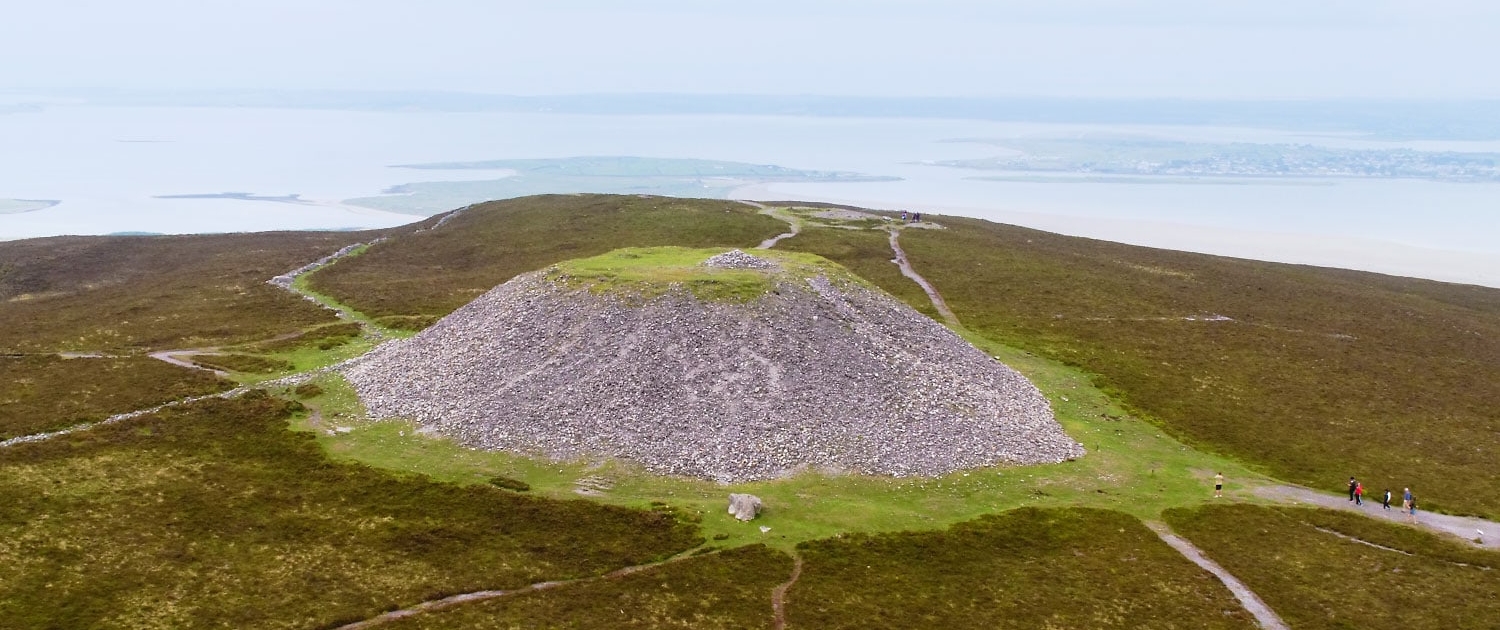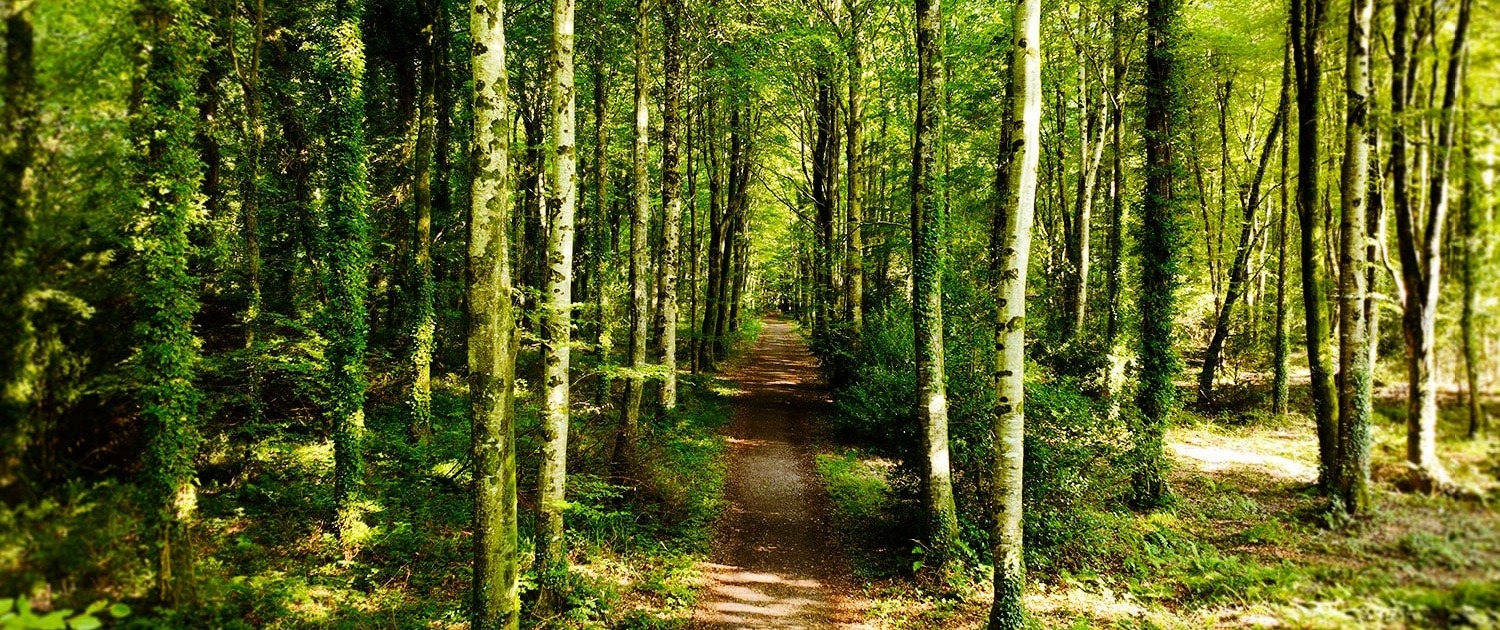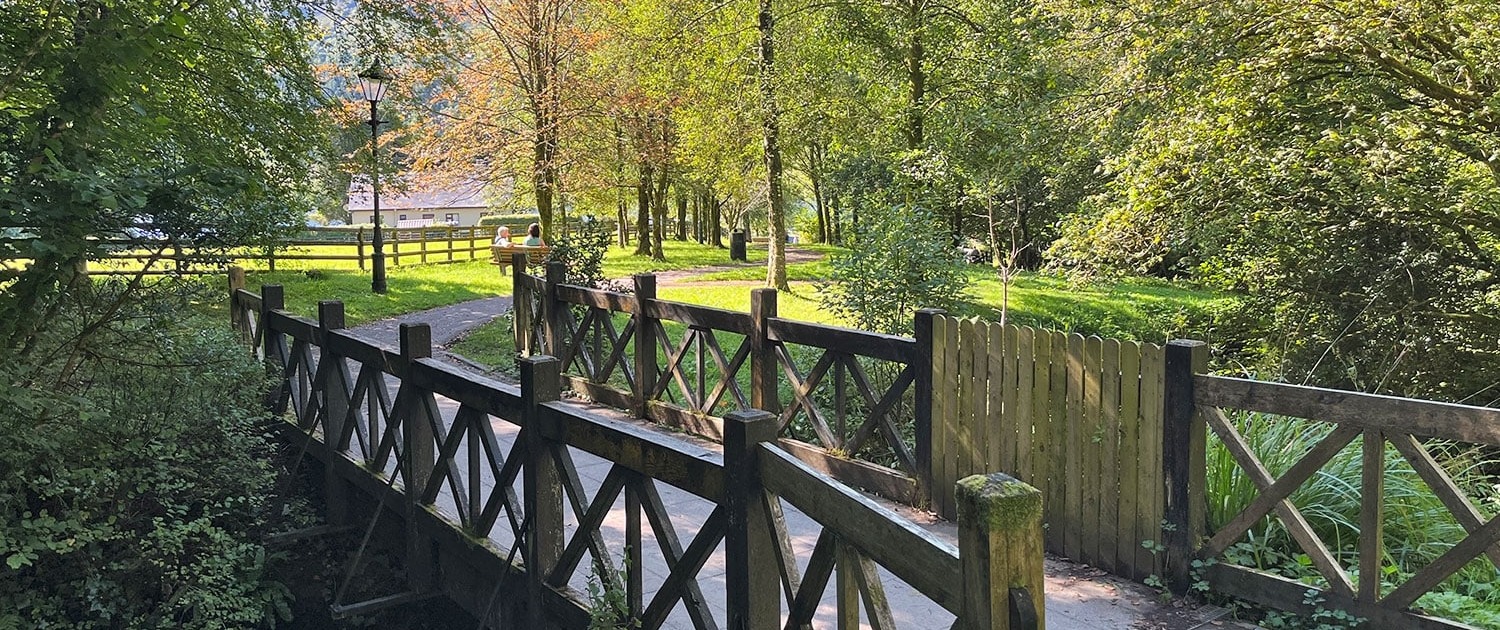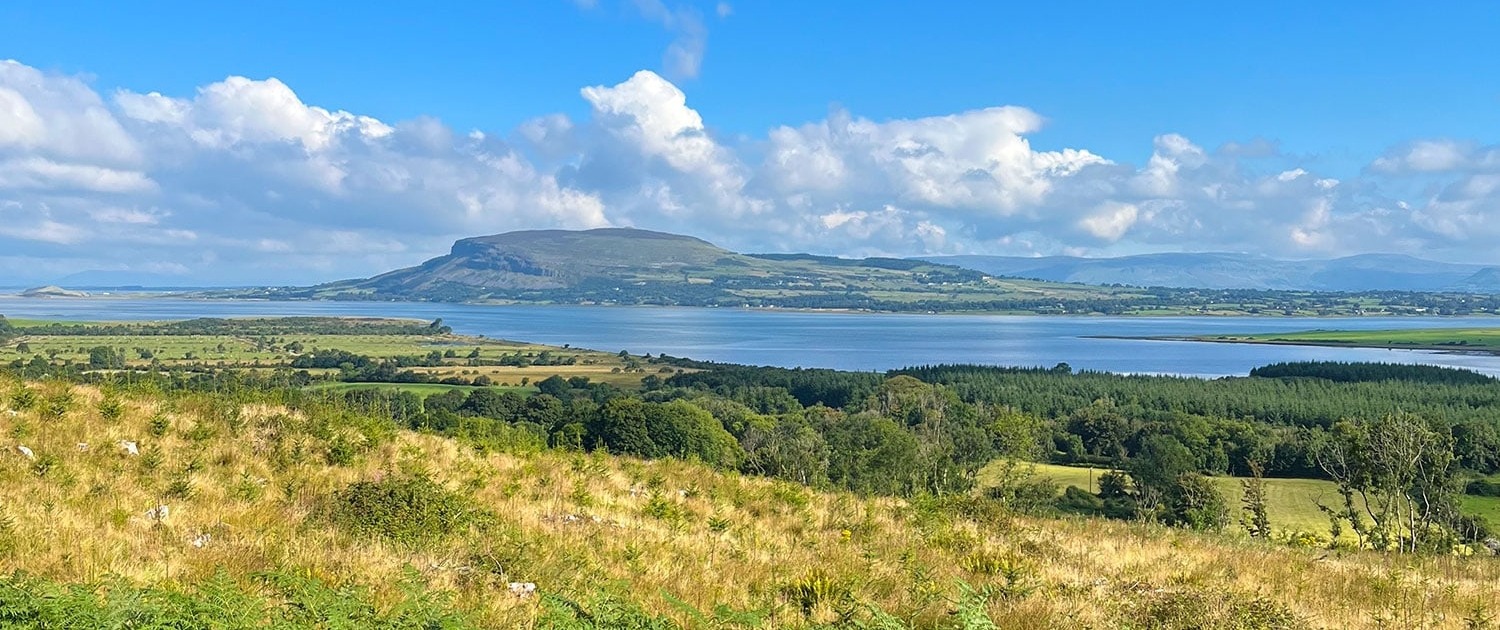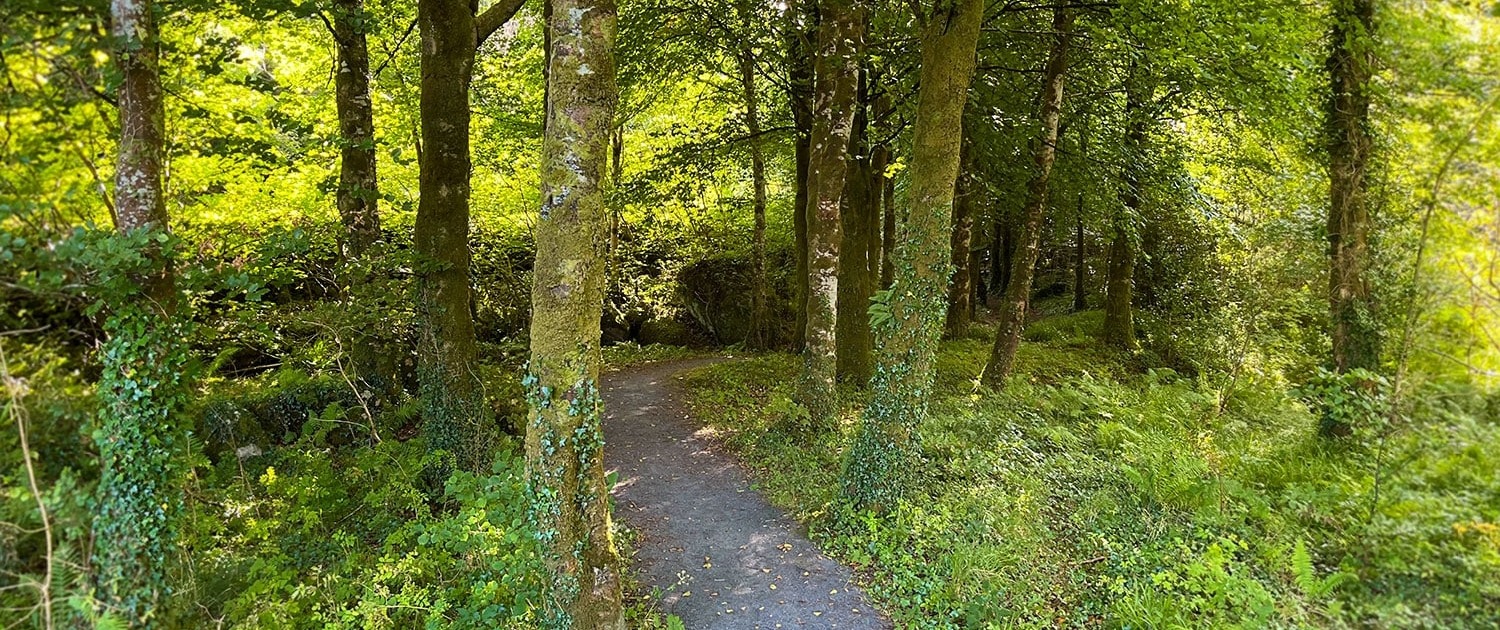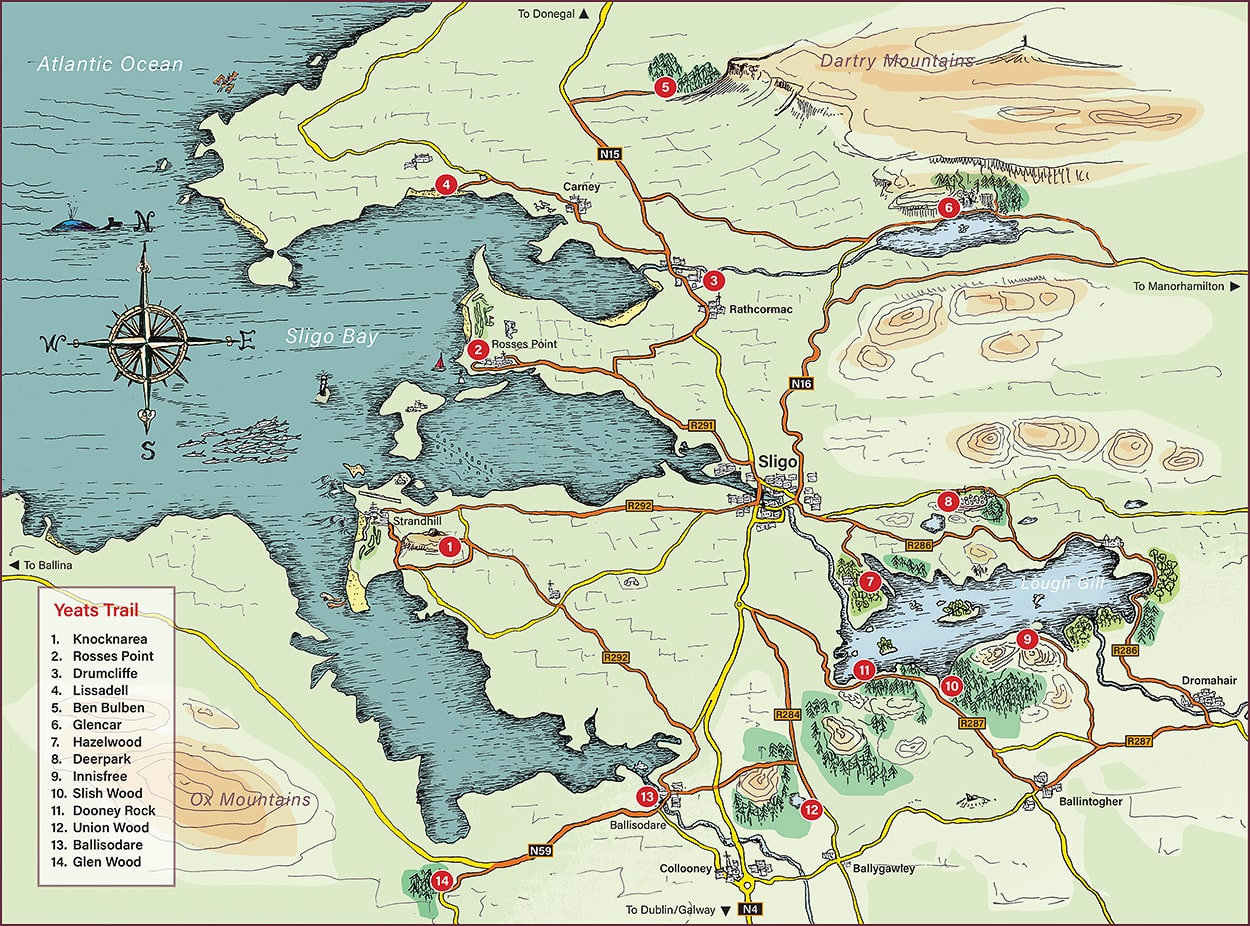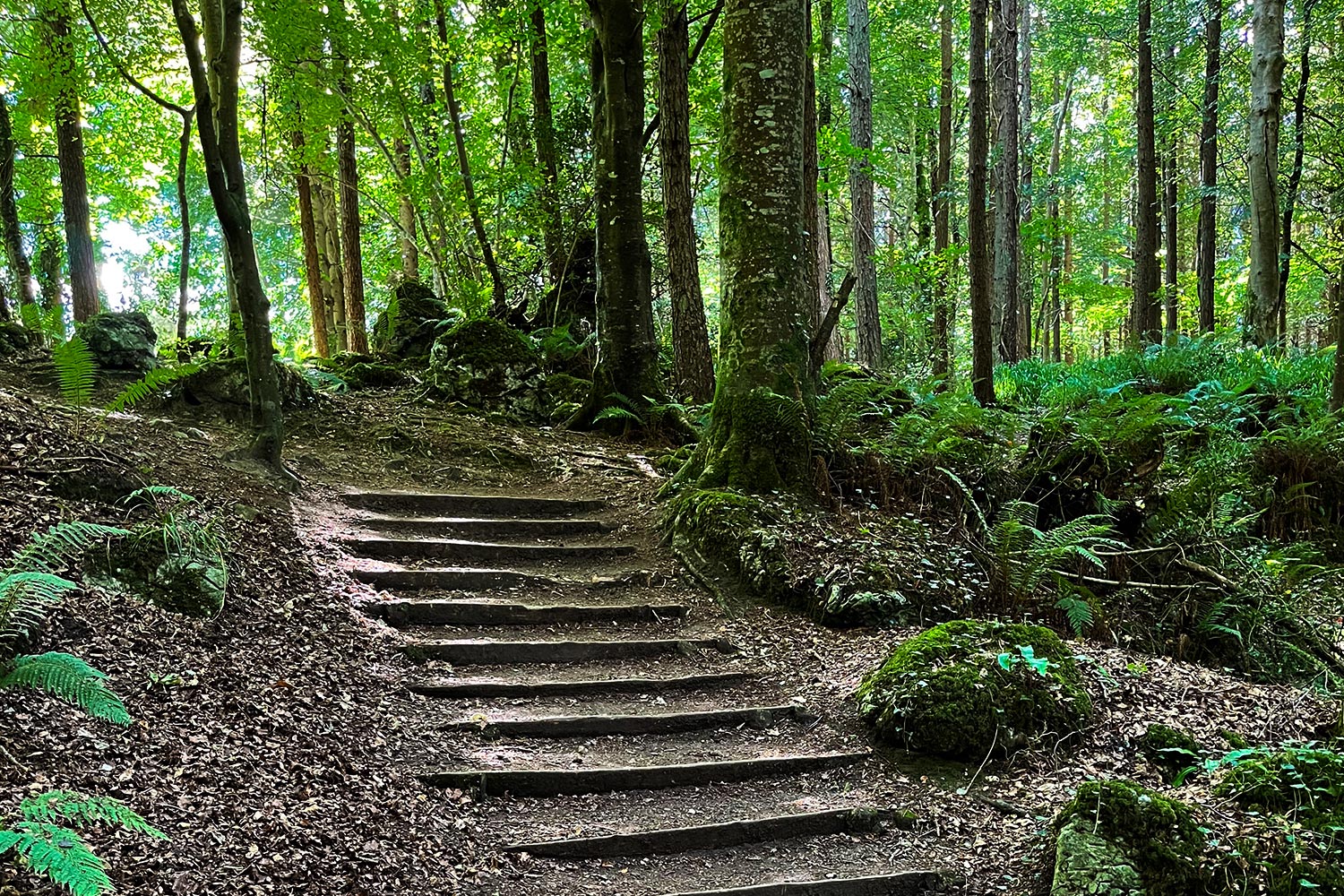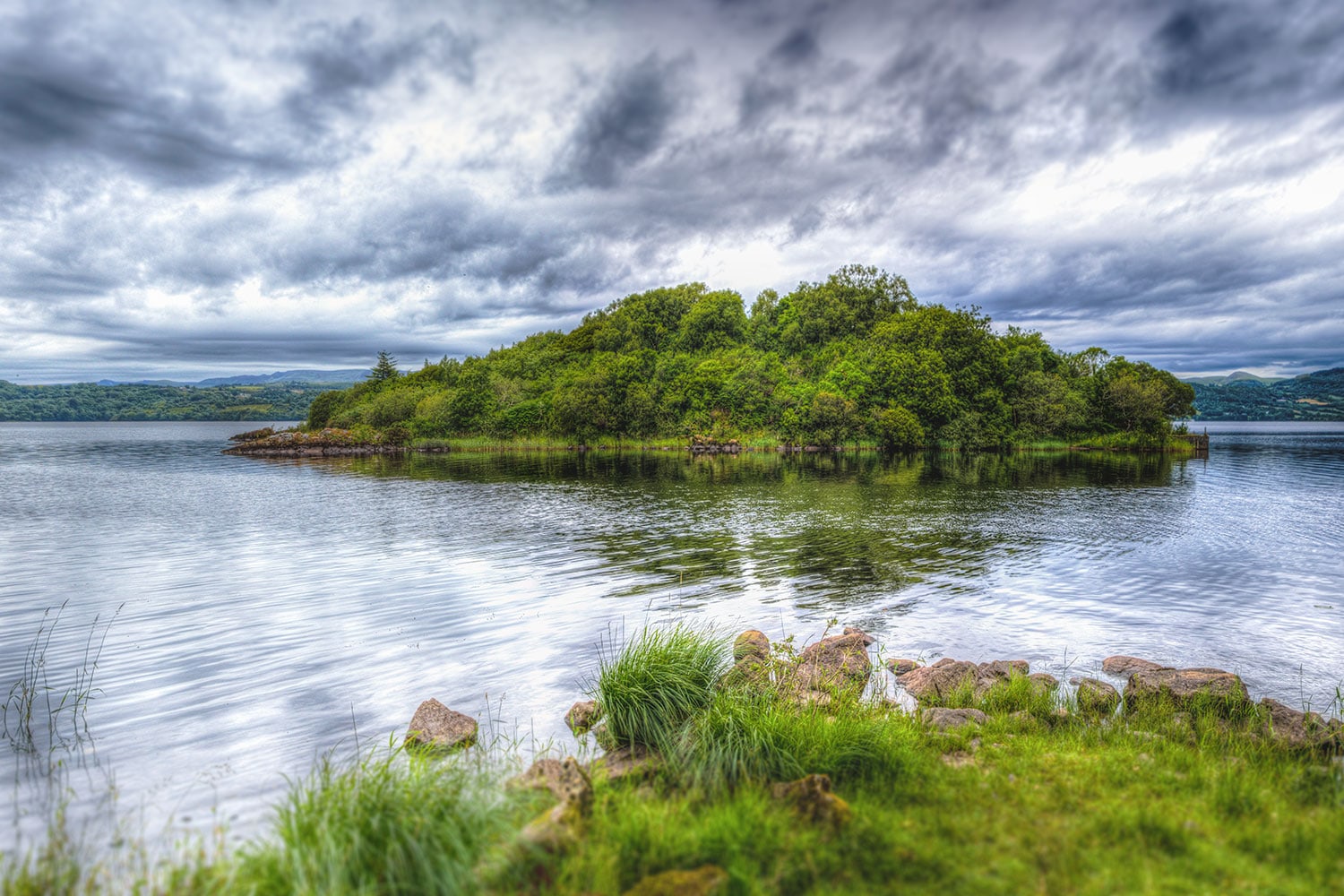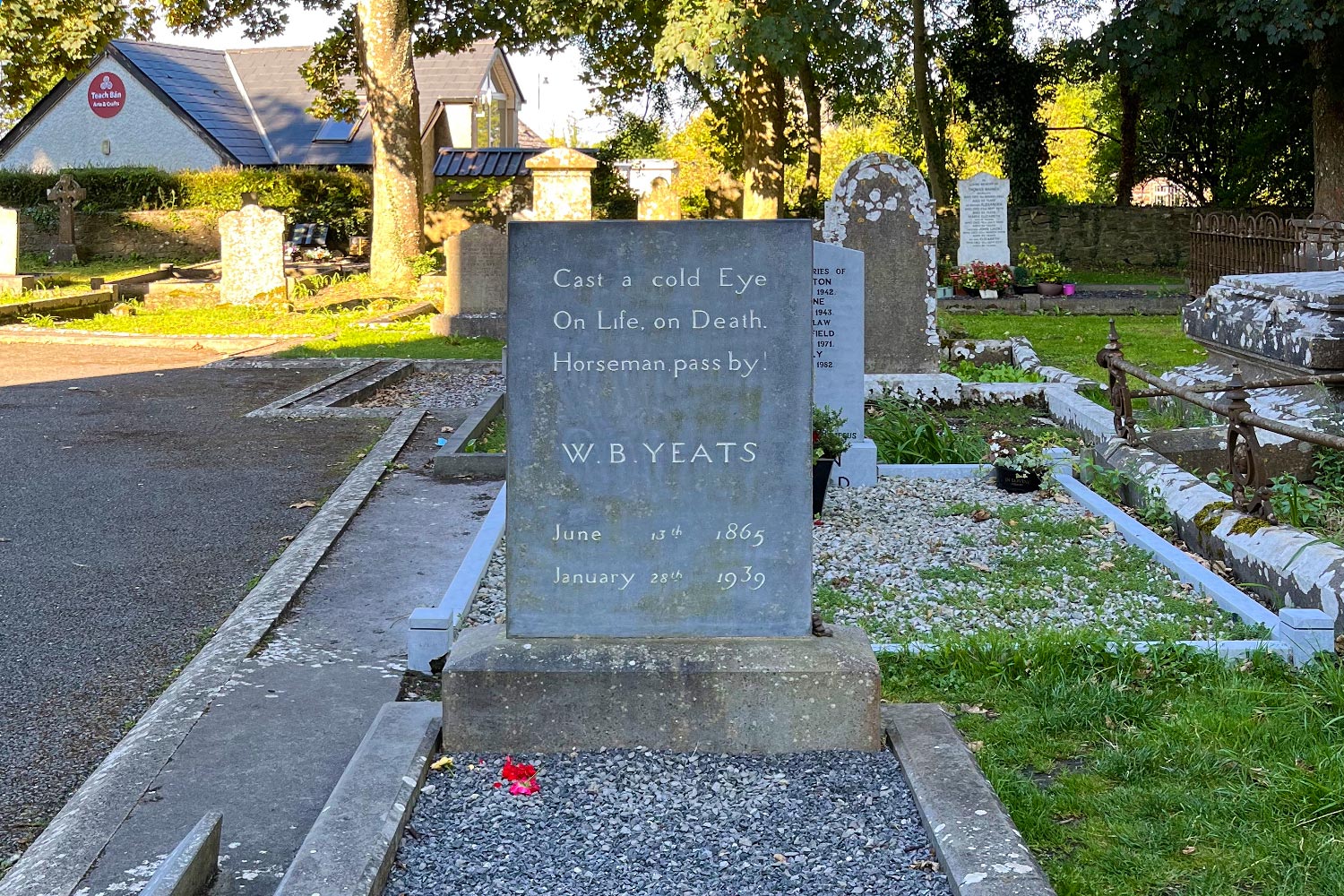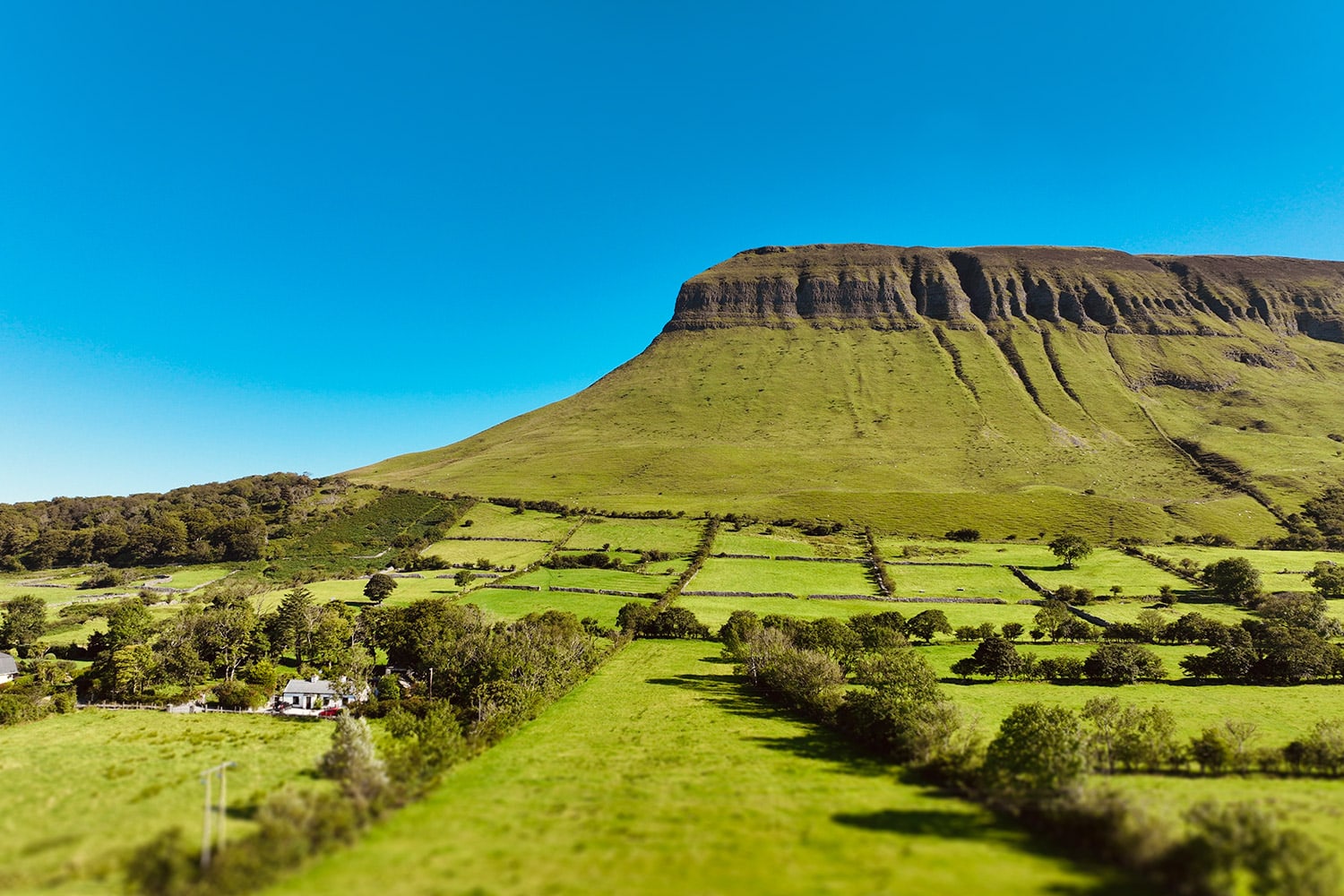Sligo was the second home of W.B. Yeats. It was where he and his artist brother Jack spent time, often for extended periods, and the influence of the county’s landscape, culture and folklore has permeated much of their work.
The Yeats Trail gives us an opportunity to explore some of these places. W.B. Yeats was known to wander in the Sligo countryside, no doubt bringing together ideas and jotting down notes, making observations of the places that became so central to his work.
So, when you visit these places that feature along the Trail, you can say with some justification that you are walking in the footsteps of W.B. Yeats, sharing many of the vistas that inspired him and that have remained little changed over the past century.
Dooney Rock is one such place that although a new car park and walking trail have recently been added, much of the terrain remains as it was, with the forest hugging the shores of Lough Gill.
Nearby, Slish Wood follows a number of waymarked trails, one which is upland and forms a short loop which begins and ends at the entrance to the forest. The other meanders along the shoreline of the lake along a gravel path which gives way to a timber boardwalk. Here, the ground rises, providing magnificent views across the lake towards some of its 22 named islands – Church, Cottage and of course Innisfree among them.
‘And I shall have some peace there, for peace comes dropping slow,’
from The Lake Isle of Innisfree (1893)
As you continue along to Dromahair, bearing left along the shoreline to return to Sligo, a minor road for Calry brings you to Deerpark, home of the Giant’s Grave, an impressive 6,000 year old court tomb, one of many Neolithic sites that populate the Sligo uplands.
To visit Hazelwood, take a short diversion signposted Hazelwood, one of our national forests, where a looped walking trail has been extended. One of fourteen art installations – one for each Yeats Trail location – provides the visitor with an opportunity to sit and reflect on the tranquil setting of the marvellously named Half Moon Bay.
Yeats spent much of his youth in Sligo, and as an adult he returned every year until 1910 and occasionally after that. When it came to make his final journey, he also chose the land of his forefathers as his final place of rest. Drumcliffe Graveyard lies along the main road between Sligo and Donegal, the entrance framed by a round tower and an 11th century High Cross.
His grave lies adjacent to the front door of the church, with its gravestone inscription:
‘Cast a cold eye
On life, on death.
Horseman pass by.’
from Under Ben Bulben (1938-39)
Immediately north of the village of Drumcliffe, Lissadell House is signposted. Lissadell is a 19th century country house, then home of Eva and Constance Gore-Booth, and where W.B. Yeats was invited to stay in 1894. It has been restored in modern times and worthy of a visit, as is the spectacular beach of the same name. From here to Ben Bulben (Benbulben), the mystical, mythical mountain that Yeats believed connected us to the otherworld.
If Ben Bulben is the iconic image most of us have of Sligo, then across the bay lies its twin, the ancient mountain of Knocknarea with Queen Maeve’s Cairn on its summit.
‘The wind has bundled up the clouds high over Knocknarea,
And thrown the thunder on the stones for all that Maeve can say.’
from Red Hanrahans Song about Ireland (1904)
As you immerse yourself in the terrain of our ancestors which overlooks Sligo Bay, its giant burial mound and satellite tombs alongside, it’s hard not to think of this place as one of pilgrimage, a focal point for people who came from far and wide over millennia, and we are, like Yeats, just passing through.
Taking in the viewing platform at Union Wood in the shadow of the Ballygawley Mountains, we turn towards the village of Ballisodare (Ballysadare). Here we find the home of Yeats’s great-uncle William Middleton, and the location of the celebrated poem, Down by the Salley Gardens that overlooks the waterfalls in the centre of the village. Further west near the Hawk’s Rock we find Glen Wood, the most westerly point of the Yeats Trail.
To access directions and trail information, click on the link for the relevant location in the navigation bar.
Each of these locations is easily accessible from the main road and all of them can be visited within a single day. Of course, we recommend that you spend some time at each, walking the trails and marvelling in the beauty of the landscape that inspired Ireland’s greatest poet.

